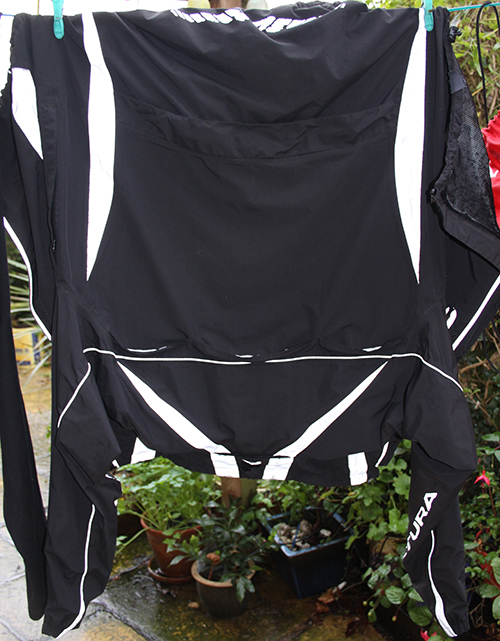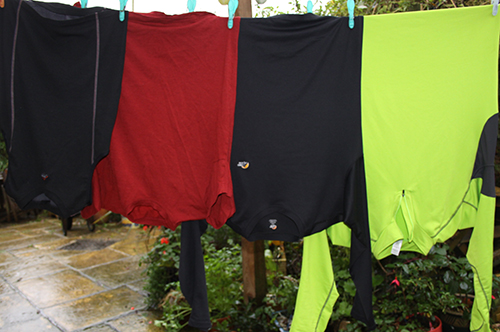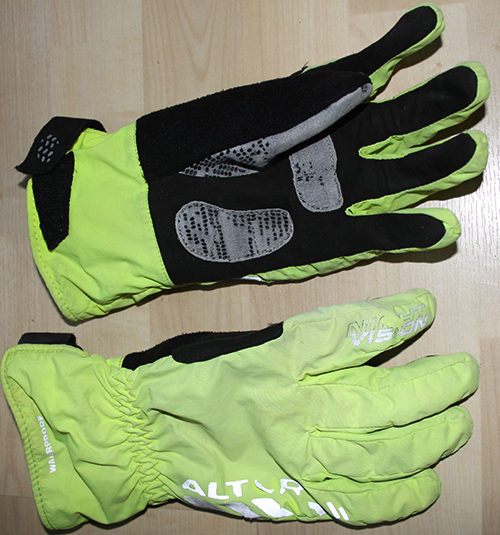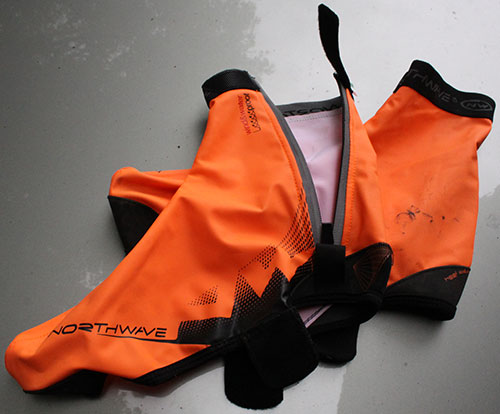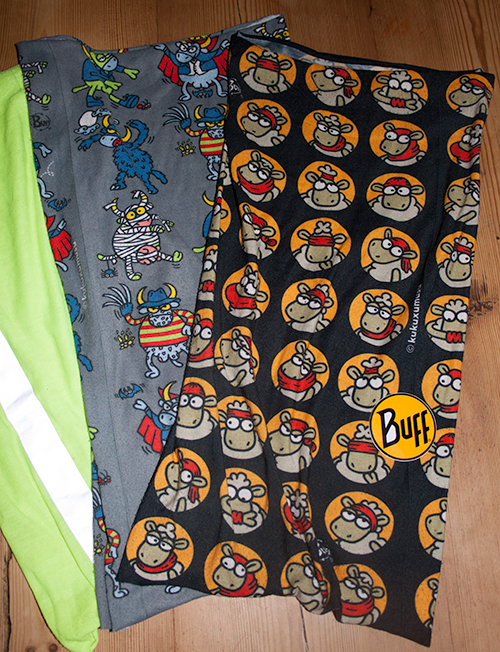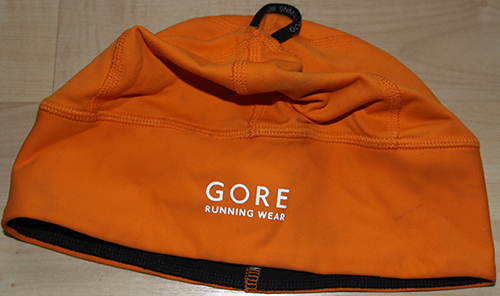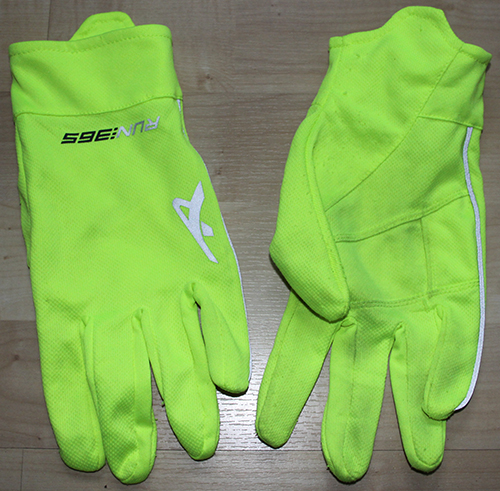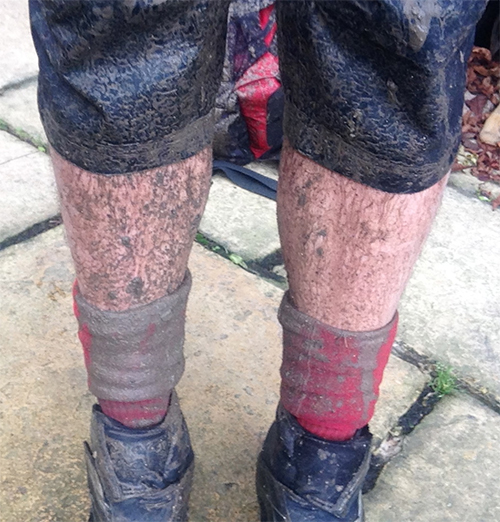In my experience what to wear during the Autumn and Winter is the biggest issue that stops people cycling as the weather deteriorates. It’s a can of worms that has too many permutations, so you need to try options and see what works best for you.
Note!! You will get your clothing wrong at times and you will end up too hot/too cold/too wet, or all three. My preference is to have a way of carrying an extra layer, either the ability to take one off mid-ride or put one on.
Controversially, unless you’re chain-ganging through the winter with an established club peloton, where the pace is steady (note – I’m not for a second saying easy, just steady), I don’t think that top-end cycle kit necessarily gives the versatility for riders heading for the trails and back-roads.
Back to that kit discussion… In the weather post I touched on jackets and baselayers, with my staple set-up being a Night Vision jacket and several outdoor-pursuit type thermals.
I rely on several different thermals – a GroundEffect merino vest, a Chapeau Cycling merino t-shirt, a long-sleeve Lowe Alpine base layer and a zip-neck Quecha (Decathlon) outdoor base layer – any combination of two of those is normally enough to get me through the worst of the winter weather, though I’ll often end up with just one layer under my jacket.
In addition to these there are a few other things that I swear by for the winter. While normal bib shorts get retired to the bottom drawer during the winter, I’ve never really liked full-length tights (unless it’s a night ride in the depths of a bitter winter), so I rely on three quarter shorts to give my legs a bit of extra warmth. Depending on how wet it is, and bearing in mind that I have a high tolerance level when it comes to winter precipitation, I’ll consider wearing either some breathable baggy overshorts or waterproof shorts – my preference for keeping the water off of me is to use a crudcatcher and whaletail on an MTB, or an ass-protector (short mud-guard) on a cyclocrosser. I have to confess that I struggle with the waterproof shorts – they’re fairly bulky, especially round the knees, so not desperately comfortable, and are guaranteed to overheat me, which means that they only ever come out when the weather is absolutely torrential.
Gloves are an absolute minefield when it comes down to choices, but rest assured that there’s nowt quite so unpleasant as freezing fingers, so take care when deciding on your options. During the winter it’s a war of attrition between my fingers and the weather, so I have an armoury of options starting with my ‘normal’ full-finger MTB gloves, through a more thermal version to full-on waterproof Altura Night Vision commuter jobbies. The latter Nigh Vision gloves have also doubled as ski gloves and I’ll carry a pair of thin glove liners in case it gets really chilly or the gloves start to get clammy. The best option is to start on the cold side, but carry the next gloves in the armoury as spares in case your hands start to suffer.
Feet are the other extremity that suffers in the winter, and it only takes one misplaced line through a puddle deeper than it looked to soak a foot and make the rest of the ride decidedly unpleasant. My biggest luxury in recent years has been the purchase of some Northwave winter boots, which are warm and dry and cosset my feet… they make winter cycling a dream, but I acknowledge that, at £140+, they are an investment that could be difficult to justify. The other options are SealSkinz socks, which I’ve used to great effect in the past, or overshoes – although my personal choice, if I had to choose one, would be to go with the overshoes as these protect your feet, your socks and your shoes from the weather, so you get full protection from the cold and wet.
Lightweight lifesavers… there are three bits of ‘warm’ kit that barely take up any space at all, so I always take on a winter outing, even a run when the weight is more important. You can whip out any one of these to make yourself feel better if you find the weather working against you:
1 – A buff, one of those lightweight neck warmers, which is invaluable for keeping the chills out and packs down to nothing if you want to stow it in your ruckie. You’ll only need one of the basic lightweight silk-type buffs, as the heavier fleecy versions are way too warm.
2 – A lightweight beanie hat –when you’re cold and wet, and having a warm layer that you can wear under your crash helmet these are a god-send that will seem like the height of luxury.
3 – Glove liners – when your gloves have succumbed to rain (from the outside) or sweat (from the inside), being able to slide your hands into dry silk liners is guaranteed to lift your spirits.
As a slight aside, having started to embrace the world of cyclocross, I’m going to explore the benefits (or not?) of embrocations this year. I’ll be reporting back on whether embrocation is just a load of hogwash passed down over the years from old rider to new, or whether it really does help a cyclist get through a winter.
Clothes washing and drying… You know those short rides in the summer, when you manage to sneak an hour or two spinning around in the sunshine first thing in the morning, and you get back feeling good, but not in a sweaty heap, and you promise yourself that you’ll do it again tomorrow, so you hang up your bib shorts and jersey rather than putting them in the wash? Well, it’s not the same in the winter… you’re going to come back after an hour with kit that’s sweaty on the inside, wet on the outside and probably muddy as well, so hanging it up anywhere indoors is either going to leave an interesting smell permeating the house or leave muddy skid-marks across other clothes/walls/cupboards/kids/etc. So every ride is going to end up threatening the washing machine with another load of your stinking kit, so if you’re riding regularly you may well want to invest in some extra clothes for wash day.
A quick comment first about carrying kit… it’s clear that winter rides do require a little more gear, so although I’m not a huge fan of rucksacks for cycling, a rucksack can be invaluable. It does mean that you can carry an extra thermal, but also allows me to carry a silver space blanket, one of those orange bivvy bags, some chocolate or mint cake, a whistle and some extra inner tubes (more of those later). Note that I do have a Mountain Leader approach to mountain bike rides, if only because (in my experience) it’s the people you meet in the wilds that often need help more than your fellow riders.
And it’s not just your bike and kit that’ll need washing… when you get back from a decent muddy thrash any exposed parts of your body are also going to be well coated with the local countryside. You have two options… one is to traipse through the house to the shower, dropping your muddy kit and blobs of grime somewhere en route, before trying to wash off the major debris without leaving a series of indelible marks on the bathroom walls/floor/ceiling – I strongly urge people not to consider this option unless they want to rapidly find themselves homeless. The better choice is to accept the inevitable and, working on the basis that ice-baths are supposed to be good post-exercise, strip off outside and use the garden hose to wash the bulk of the muds from your legs and other extremities, before making a dash for a strategically placed towel at the back door and a cleaner walk through the house to a warming shower.
But remember that you’re doing this because it’s, first and foremost, great fun and also keeps you fit.
